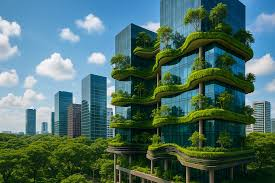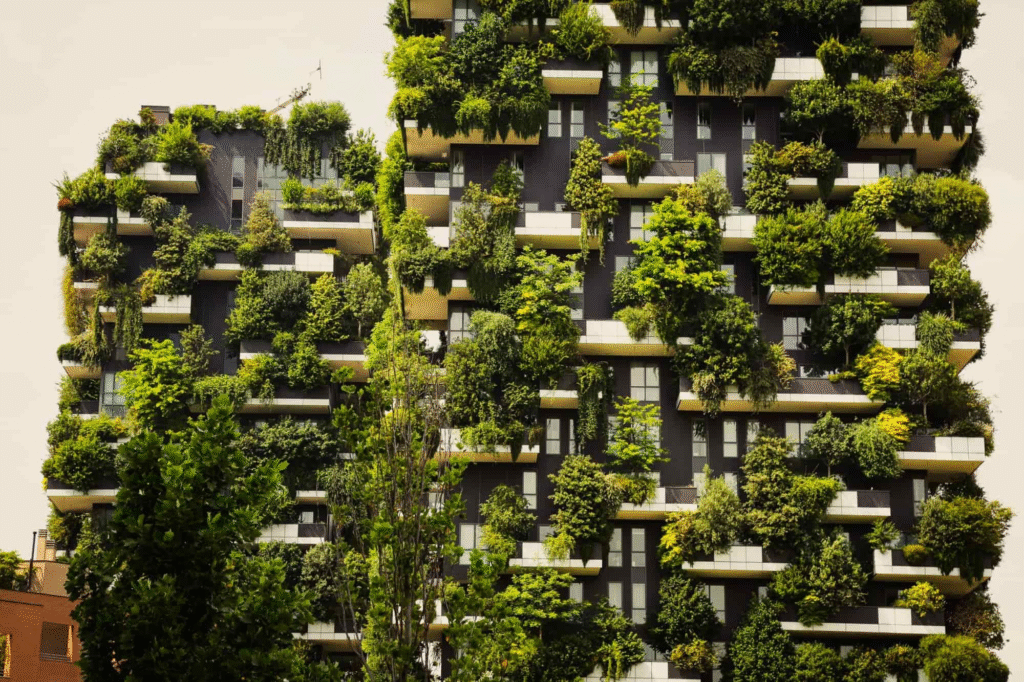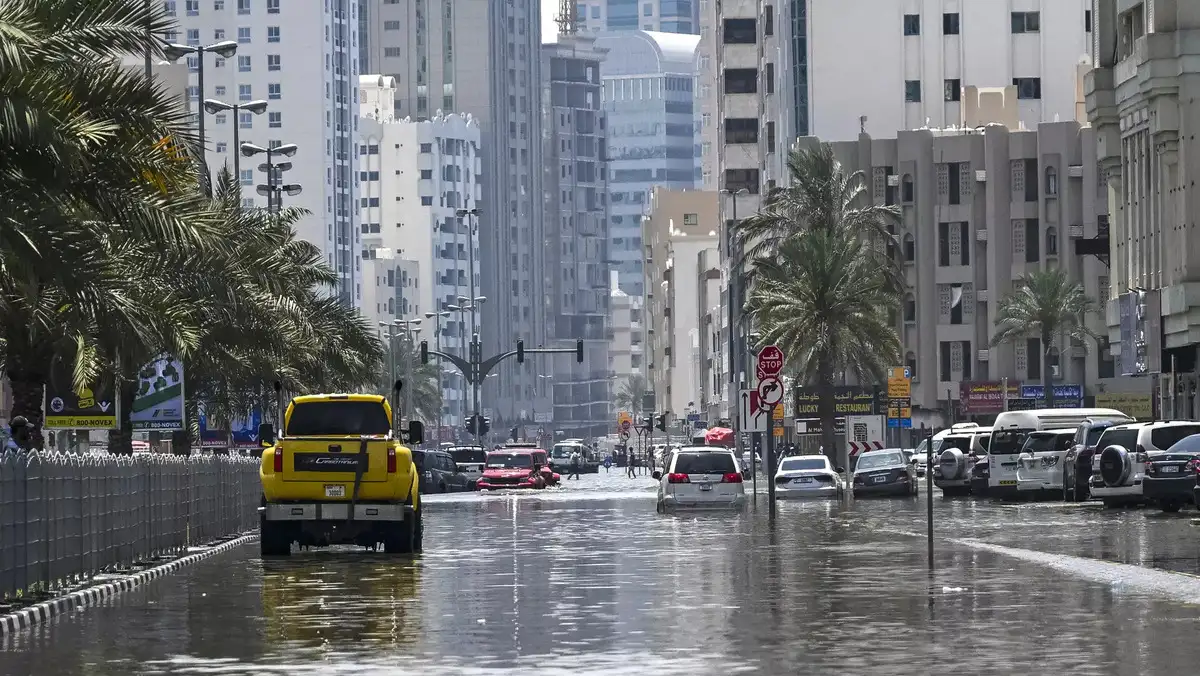Now Reading: Green Buildings in UAE: 6 Tax Credits Developers Can Leverage in 2025
-
01
Green Buildings in UAE: 6 Tax Credits Developers Can Leverage in 2025
Green Buildings in UAE: 6 Tax Credits Developers Can Leverage in 2025

Table of Contents
The UAE’s real estate market, valued at AED 958 billion in 2024 with 23.9% year-on-year growth, is a global leader in sustainable construction, driven by initiatives like Dubai’s Green Building Regulations and the UAE Net Zero 2050 strategy, per gtlaw.com.
Green buildings, which reduce energy use by 30–40% compared to pre-2014 structures, are incentivized through tax credits and financial benefits, per 100keys.ae. Developers face a 9% corporate tax (CT) introduced in June 2023 under Federal Decree-Law No. 47, with non-compliance fines up to AED 500,000, per jaxaauditors.com.
This article outlines six tax credits and incentives UAE developers can leverage for green buildings in 2025, with U.S. investor considerations, using web insights.
UAE Tax and Incentive Framework for Green Buildings

Green building developers benefit from tax credits and fiscal incentives aligned with sustainability goals, per ae.insightss.co:
- Corporate Tax: 9% on profits above AED 375,000 (~$102,000); 0% for Qualifying Free Zone Persons (QFZPs) or small businesses with revenue below AED 3 million until December 31, 2026, per taxsummaries.pwc.com.
- VAT: 5% on commercial transactions; residential sales/long-term leases are zero-rated or exempt, per shuraatax.com.
- Green Incentives: Tax credits for renewable energy, energy efficiency, and sustainable construction; reduced fees for certified projects, per skylineholding.com.
- Compliance: Federal Tax Authority (FTA) registration, seven-year record retention, and adherence to green standards (e.g., LEED, Estidama) are mandatory, per hawksford.com.
6 Tax Credits and Incentives for Green Building Developers in 2025
1. Renewable Energy Tax Credits
Developers integrating renewable energy sources, such as solar panels, into green buildings qualify for renewable energy tax credits, reducing CT liability, per ae.insightss.co. These credits apply to costs for installation and maintenance of solar, wind, or hybrid systems.
- Incentive Impact: A AED 2 million (~$544,000) solar installation on a AED 50 million project saves AED 180,000 CT (9% credit), boosting yield by 0.4%.
- U.S. Consideration: Claim U.S. Investment Tax Credit (ITC, up to 30%) for solar investments; report on Form 3468, per irs.gov.
- Action: Document renewable energy costs; apply for credits via FTA; certify systems with DEWA, per farahatco.com.
2. Energy Efficiency Tax Rebates
Tax rebates are available for energy-efficient technologies, such as smart HVAC systems, LED lighting, and high-performance insulation, in green buildings achieving 20% energy savings, per bhomes.com. These reduce taxable income for CT purposes.
- Incentive Impact: A AED 1 million (~$272,000) investment in smart systems for a AED 30 million project saves AED 90,000 CT (9% rebate), preserving 8% yield.
- U.S. Consideration: Deduct expenses on Schedule E; align with IRS Section 179 deductions, per irs.gov.
- Action: Retain invoices; certify efficiency with EmiratesGBC; file with FTA, per finanshels.com.
3. Green Building Certification Tax Credits

Developers achieving certifications like LEED, Estidama, or Al Sa’fat qualify for tax credits and reduced registration fees, per skylineholding.com. These incentives reward sustainable design and construction practices.
- Incentive Impact: A AED 500,000 (~$136,000) certification cost for a AED 100 million project saves AED 45,000 CT (9% credit) and AED 50,000 in fees, enhancing yield by 0.1%.
- U.S. Consideration: Report expenses on Form 1120-F; no direct U.S. equivalent, per irs.gov.
- Action: Engage LEED consultants; submit certification to DLD; claim credits via EmaraTax, per emirabiz.com.
4. R&D Tax Credits for Sustainable Innovations
Starting in 2026, developers investing in R&D for green technologies (e.g., 3D-printed insulation, smart building systems) can claim 30–50% refundable R&D tax credits, per virtuzone.com. Preparation in 2025 ensures eligibility.
- Incentive Impact: A AED 1 million (~$272,000) R&D investment in 2025 yields AED 300,000–500,000 credits in 2026, offsetting CT on a AED 20 million project.
- U.S. Consideration: Claim U.S. R&D credit (up to 20%) on Form 6765; report on Form 1120-F, per irs.gov.
- Action: Track R&D expenses; train staff on documentation; consult advisors, per alphapartners.co.
5. Biodiversity Conservation Tax Credits
Developers incorporating green roofs, vertical gardens, or ecosystem preservation in projects qualify for biodiversity tax credits, reducing CT liability, per ae.insightss.co. These apply to landscaping and conservation initiatives.
- Incentive Impact: A AED 500,000 (~$136,000) green roof on a AED 40 million project saves AED 45,000 CT (9% credit), boosting yield by 0.1%.
- U.S. Consideration: Deduct as business expense on Schedule E; no U.S. equivalent, per irs.gov.
- Action: Document conservation costs; certify with municipality; file with FTA, per hawksford.com.
6. Patent Box Regime for Green IP
Developers generating income from patented green technologies (e.g., energy-efficient systems) benefit from a 0% CT rate under the UAE’s patent box regime, per virtuzone.com. This complements R&D credits for IP development.
- Incentive Impact: A AED 2 million (~$544,000) income from patented smart systems avoids AED 180,000 CT, preserving 8% yield on a AED 25 million project.
- U.S. Consideration: Report IP income on Form 1120-F; align with IRS Section 174, per irs.gov.
- Action: Register patents with UAE Ministry of Economy; apply for patent box relief; maintain IP records, per tamimi.com.
Quantitative Impact on Returns
Consider a AED 50 million green building project yielding 8% (AED 4 million annually):
- Renewable Energy Credit: AED 180,000 CT savings boosts yield to 8.4%.
- R&D Credit: AED 300,000 refund in 2026 offsets CT, maintaining 8% yield.
- Patent Box: 0% CT on AED 1 million IP income saves AED 90,000, preserving 8.2% yield.
- Non-Incentivized Case: 9% CT (AED 360,000), 5% VAT (AED 200,000), and AED 50,000 fines reduce yield to 7.2%.
Key Considerations for U.S. Investors
- Risks:
- Non-Compliance: Fines up to AED 500,000 for tax violations, per jaxaauditors.com.
- Oversupply: 14,000 units planned for 2026–2029 may soften yields by 0.5–1%, per omniacapitalgroup.com.
- Costs: Certification costs AED 200,000–500,000; compliance costs AED 10,000–20,000 annually, per hausandhaus.com.
- Tax Compliance: IRS requires Form 1120-F, Form 3468, Form 6765, Form 8938, and FinCEN Form 114, per irs.gov.
- Regulatory Compliance: DLD mandates green certifications; emirate-specific fees (e.g., Dubai’s 4% transfer fee) apply, per crcproperty.com.
- Currency Stability: AED pegged at 1 USD = 3.67 minimizes risk, per kaizenams.com.
Conclusion
In 2025, UAE green building developers can leverage six tax credits—renewable energy, energy efficiency, certifications, R&D, biodiversity, and patent box—to optimize 6–10% yields in a AED 958 billion market. U.S. investors, aligning IRS and FTA compliance, can maximize returns by partnering with firms like Hawksford or Farahat & Co. for strategic tax planning. Green Buildings
read more: Affordable Housing Projects in UAE: 7 Tax Benefits Explained





















